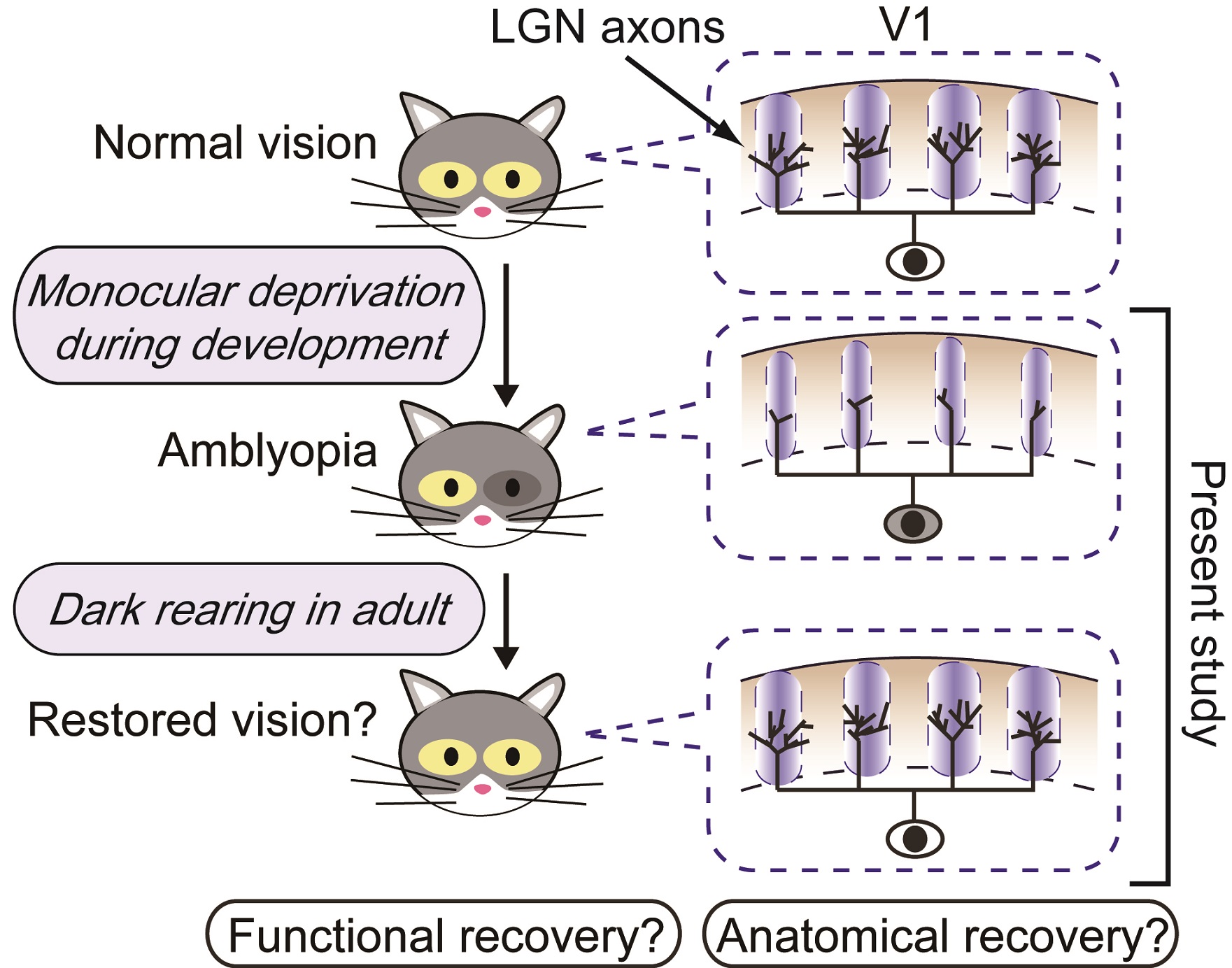Yoshio Hata (Tottori University)

“Reorganization of visual neural circuitry during recovery from amblyopia”
Monocular deprivation during early postnatal life induces functional and anatomical changes in the visual system. In the primary visual cortex, most neurons lose their responses to the deprived eye and the deprived eye becomes amblyopic. Anatomically, afferent axons from the lateral geniculate nucleus carrying information from the deprived eye retract their arbors in the cortex, and the cortical territory (ocular dominance column) receiving inputs from the deprived eye shrinks. These changes are induced only in the critical period of development, thus it is difficult to restore vision in amblyopic eye after maturation.
Recently, the mechanism of ocular dominance plasticity has been studied intensively in rodents, and several manipulations such as dark rearing have been reported to restore the function of amblyopic eye in adult. However, it is not clear whether these techniques are effective in the higher mammals, because monocular deprivation alters visual neural circuitry in cats and monkeys such as a retraction of deprived eye afferents while such anatomical change is not remarkable in rodents. Therefore, it is necessary to confirm the effectiveness of each method in higher mammals.
Therefore, I examine the restorative effect of dark rearing on the function and neural circuitry of cat visual system by evaluating visual responses of neurons in the primary visual cortex, morphology of geniculocortical axons and synapse distribution on them, and size of ocular dominance columns. This study would promote a better understanding of circuit mechanisms of functional recovery from amblyopia.
Recent Publications
1. Ohmura N, Kawasaki K, Satoh T, Hata Y (2015) In vivo electroporation to physiologically identified deep brain regions in postnatal mammals. Brain Struct and Funct 220:1307-1316.
Morishima Y, Toigawa M, Ohmura N, Yoneda T, Tagane Y, Hata Y (2013) Critical period ofexperience-driven axon retraction in the pharmacologically inhibited visual cortex. Cerebral
Cortex 23:2423-2428.
2. Yoneda T, Kameyama K, Esumi K, Daimyo Y, Watanabe M, Hata Y. (2013) Developmental and visual input-dependent regulation of the CB1 cannabinoid receptor in the mouse visual cortex. PLoS ONE 8(1), e53082.
3. Haruta M, Hata Y (2007) Experience-driven axon retraction without binocular imbalance in developing visual cortex. Curr Biol 17:37-42.
Posted:2016/03/10

